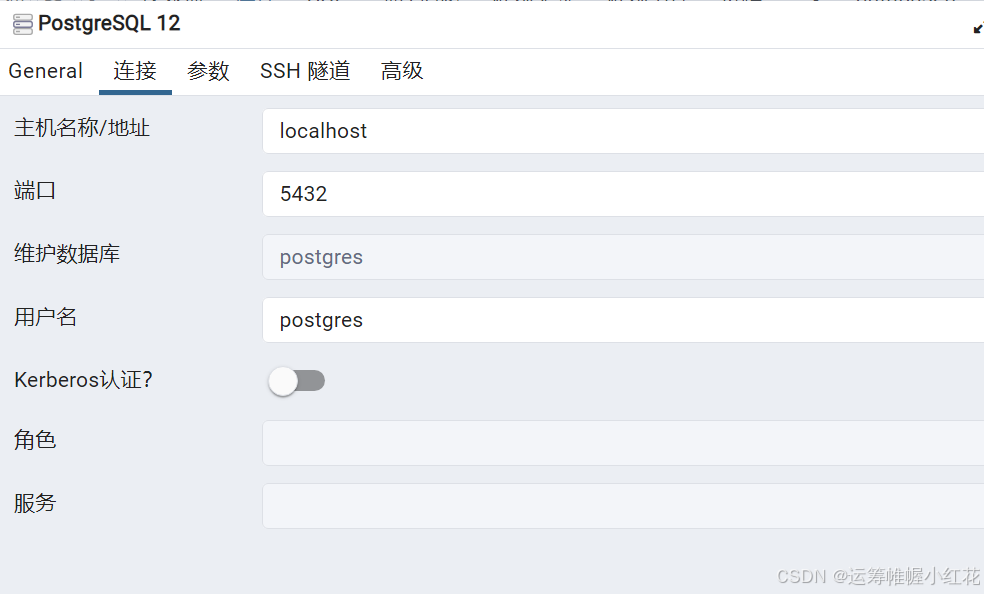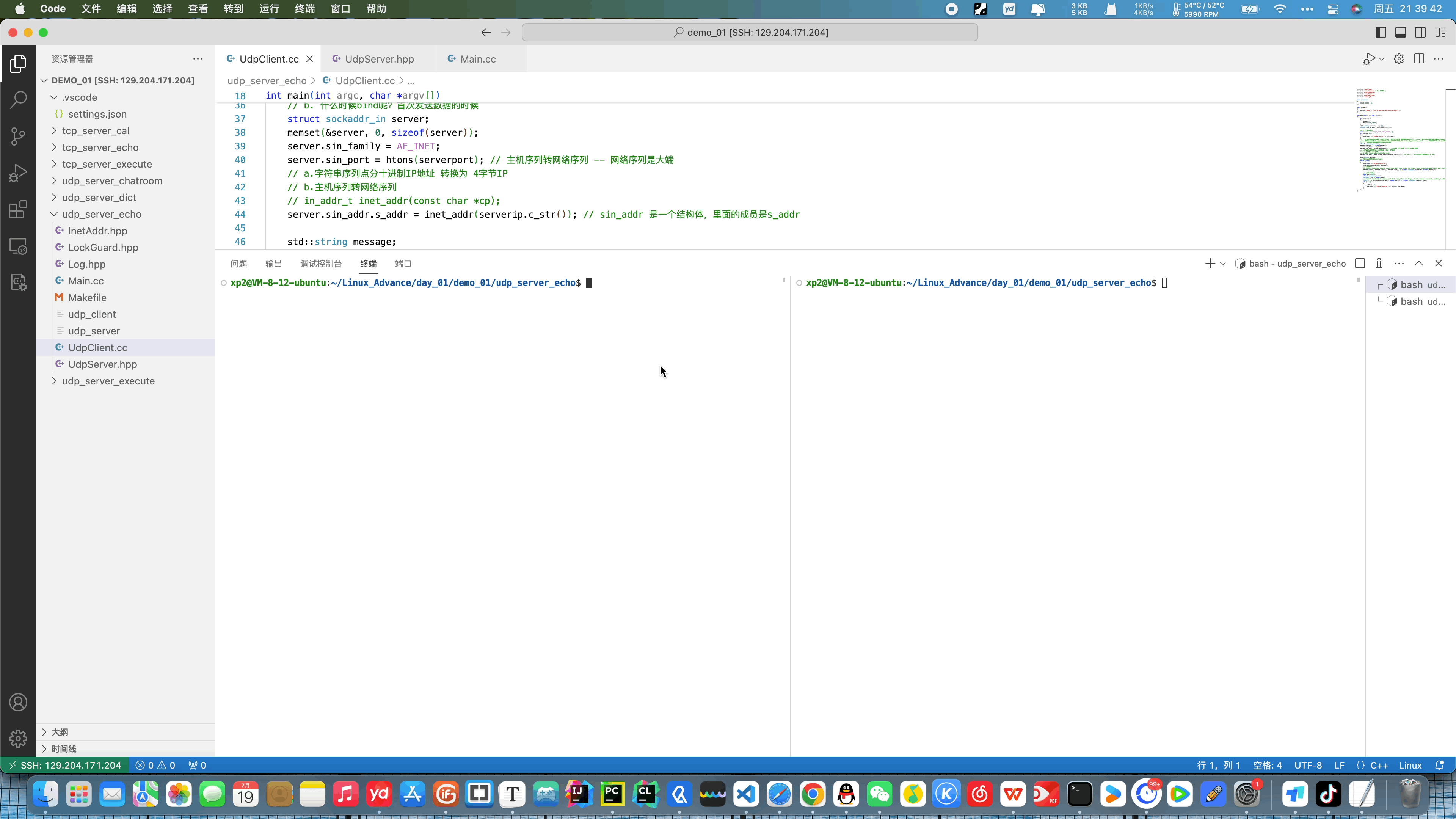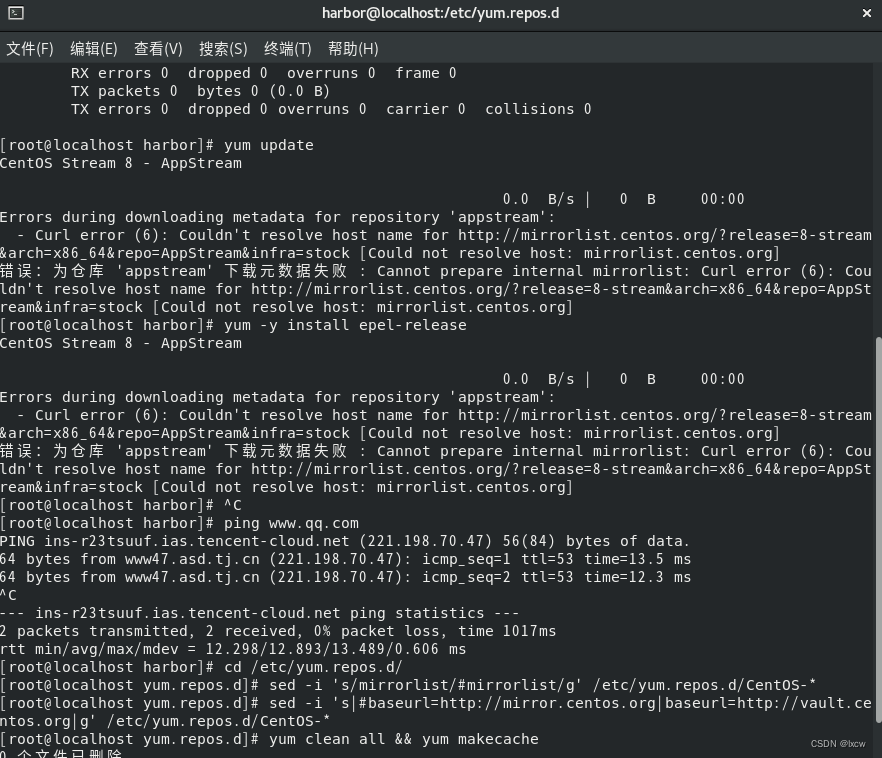目录
- 前言
- 一,AVL树的概念
- 二,AVL树节点的定义
- 三,AVL树的插入
- 3.1 第一步
- 3.2 第二步
- 四,AVL树的旋转
- 4.1 右单旋
- 4.2 左单旋
- 4.3 右左双旋
- 4.4 左右双旋
- 4.5 插入代码的完整实现
- 4.6 旋转总结
- 五,AVL树的验证
- 六,实现AVL树的完整代码
点击跳转至上一篇文章: 【【C++/STL】:set和map的介绍及基本使用】
前言
上一篇文章对map/multimap/set/multiset进行了简单的介绍,在其文档介绍中发现,这几个容器有个共同点是:其底层都是按照二叉搜索树来实现的,但是二叉搜索树有其自身的缺陷,假如往树中插入的元素有序或者接近有序,二叉搜索树就会退化成单支树,时间复杂度会退化成O(N),因此map、set等关联式容器的底层结构是对二叉树进行了平衡处理,即采用平衡树来实现。
本篇文章介绍的就是平衡树之一的:AVL树。
注意:本篇文章AVL树实现的 key_value 模型。因为实际上 map/set 的底层并不是用AVL树封装的,而是用红黑树(下一篇文章),在红黑树的部分我们再对 key 和 key_value 模型进行更深层次的封装。
一,AVL树的概念
对于二叉搜索树极端情况下查找效率低下的问题,有大佬提出了这样的解决方法:
当向二叉搜索树中插入新结点后,如果能保证每个结点的左右子树高度之差的绝对值不超过1(需要对树中的结点进行调整),即可降低树的高度,从而减少平均搜索长度。
一棵AVL树或者是空树,或者是具有以下性质的二叉搜索树:
(1) 它的左右子树都是AVL树;
(2) 左右子树高度之差(简称平衡因子)的绝对值不超过1(-1/0/1)

如果一棵二叉搜索树是高度平衡的,它就是AVL树。如果它有n个结点,其高度可保持在
O ( l o g 2 n ) O(log_2 n) O(log2n),搜索时间复杂度O( l o g 2 n log_2 n log2n)。
二,AVL树节点的定义
AVL树节点的定义:
(1) 三叉链:左子树,右子树,父亲。
(2) 平衡因子:一般情况下是,右子树高度 - 左子树高度。
(3) key_value 模型的 pair 类型的数据。
template<class K, class V>
struct AVLTNode
{pair<K, V> _kv;AVLTNode<K, V>* _left;AVLTNode<K, V>* _right;AVLTNode<K, V>* _parent;int _bf; //平衡因子:右子树高度- 左子树高度AVLTNode(const pair<K, V>& kv):_kv(kv), _left(nullptr), _right(nullptr), _parent(nullptr), _bf(0){}
};
三,AVL树的插入
AVL树就是在二叉搜索树的基础上引入了平衡因子,因此AVL树也可以看成是二叉搜索树。那么
AVL树的插入过程可以分为两步:
3.1 第一步
先按照二叉搜索树的方式插入新节点:
bool Insert(const pair<K, V>& kv)
{if (_root == nullptr){_root = new Node(kv);return true;}Node* cur = _root;Node* parent = nullptr;while (cur){if (cur->_kv.first > kv.first){parent = cur;cur = cur->_left;}else if (cur->_kv.first < kv.first){parent = cur;cur = cur->_right;}elsereturn false;}cur = new Node(kv);//链接时要判断链接在左还是右if (parent->_kv.first > kv.first)parent->_left = cur;elseparent->_right = cur;cur->_parent = parent;// 调节平衡因子……return true;
}
3.2 第二步
再调整节点的平衡因子:
根据插入情况来更新 parent 的平衡因子,并且根据平衡因子来判断是否破坏了AVL树的平衡性。
重点分析:
在插入之前,parent 的平衡因子可能为:-1,0或1。插入分以下两种情况:
(1) 如果 cur 插入到 parent 的左侧,只需给 parent 的平衡因子 -1 即可
(2) 如果 cur 插入到 parent 的右侧,只需给parent 的平衡因子 +1 即可
插入后,此时:parent 的平衡因子可能为:0,正负1, 正负2。对应下面三种情况:
(1) 如果 parent 的平衡因子为0,说明插入之前 parent 的平衡因子为正负1,插入后被调整成0,此时满足AVL树的性质,插入成功,停止检查;
(2) 如果 parent 的平衡因子为正负1,说明插入前 parent 的平衡因子一定为0,插入后被更新成正负1,此时以 parent 为根的树的高度增加,需要继续向上更新检查;
(3) 如果 parent 的平衡因子为正负2,则 parent 的平衡因子违反平衡树的性质,此时需要对其进行旋转处理
//调节平衡因子……续上文代码//从cur开始,一直向上更新。根据cur是parent的左或右,
// 对parent的平衡因子--或++
while (parent)
{if (cur == parent->_left)parent->_bf--;elseparent->_bf++;if (parent->_bf == 0)break; // 此时平衡了,停止更新else if (parent->_bf == 1 || parent->_bf == -1){//继续向上更新cur = parent;parent = parent->_parent;}else if (parent->_bf == 2 || parent->_bf == -2){// 旋转操作……}
}
四,AVL树的旋转
如果 parent 的平衡因子为正负2,此时必须调整树的结构,使之平衡化。
根据节点插入位置的不同,AVL树的旋转分为四种,下面将通过抽象图与具象图进行详细介绍:
说明:下面的抽象图中 a/b/c/d 表示AVL树,h/h+1 表示树的高度, h >= 0。
4.1 右单旋
新节点插入较高左子树的左侧 — 左左:右单旋
抽象图:

上图在插入前,AVL树是平衡的,新节点插入到30的左子树(注意:此处不是左孩子)中,30左
子树增加了一层,导致以60为根的二叉树不平衡,要让60平衡,只能将60左子树的高度减少一层,右子树增加一层,即将左子树往上提,这样60转下来,因为60比30大,只能将其放在30的右子树,而如果30有右子树,右子树根的值一定大于30,小于60,只能将其放在60的左子树,旋转完成后,更新节点的平衡因子即可。
在旋转过程中,有以下几种情况需要考虑:
(1) 30节点的右孩子可能存在,也可能不存在;
(2) 60可能是根节点,也可能是子树。如果是根节点,旋转完成后,要更新根节点,如果是子树,可能是某个节点的左子树,也可能是右子树。
具象图:
具象图的实际情况有无穷多种,这里用 h == 1 来说明情况。

插入新增后向上检查变到第二个图,此时需要旋转,把30的右子树拿给60当左子树,60的左边太高了,把它向下压降低高度,把60那个子树拿给30当右子树。
代码实现如下:
//右单旋
void RotateR(Node* parent)
{Node* subL = parent->_left;Node* subLR = subL->_right;if (subLR)subLR->_parent = parent;parent->_left = subLR;subL->_right = parent;//改变之前记录Node* ppNode = parent->_parent;parent->_parent = subL;//parent为根if (parent == _root){_root = subL;_root->_parent = nullptr;}else{//parent为一颗子树if (ppNode->_left == parent)ppNode->_left = subL;elseppNode->_right = subL;subL->_parent = ppNode;}parent->_bf = subL->_bf = 0;
}
4.2 左单旋
新节点插入较高右子树的右侧—右右:左单旋
实现及情况考虑可参考右单旋。
抽象图:

具象图:

代码实现如下:
//左单旋
void RotateL(Node* parent)
{Node* subR = parent->_right;Node* subRL = subR->_left;if (subRL)subRL->_parent = parent;parent->_right = subRL;subR->_left = parent;Node* ppNode = parent->_parent;parent->_parent = subR;//parent为根if (parent == _root){_root = subR;_root->_parent = nullptr;}else{//parent为一颗子树if (ppNode->_left == parent)ppNode->_left = subR;elseppNode->_right = subR;subR->_parent = ppNode;}parent->_bf = subR->_bf = 0;
}
4.3 右左双旋
新节点插入较高右子树的左侧—右左:先右单旋再左单旋。
抽象图:

将双旋变成单旋后再旋转,即:先对90进行右单旋,然后再对30进行左单旋,旋转完成后再考虑平衡因子的更新。
具象图:
有了上面的左单旋,右单旋,双旋可以直接复用,双旋后麻烦的是平衡因子的更新,又有三种情况:
旋转前保存 subRL 的平衡因子,旋转完成之后,需要根据该平衡因子来调整其他节点的平衡因子。

代码实现如下:
//右左双旋
void RotateRL(Node* parent)
{Node* subR = parent->_right;Node* subRL = subR->_left;int bf = subRL->_bf;RotateR(parent->_right); // 经过这个单旋,变成单纯的右边高RotateL(parent);if (bf == -1){parent->_bf = 0;subR->_bf = 1;subRL->_bf = 0;}else if (bf == 1){parent->_bf = -1;subR->_bf = 0;subRL->_bf = 0;}else if (bf == 0){parent->_bf = 0;subR->_bf = 0;subRL->_bf = 0;}elseassert(false);
}
4.4 左右双旋
新节点插入较高左子树的右侧—左右:先左单旋再右单旋。
抽象图:

将双旋变成单旋后再旋转,即:先对30进行左单旋,然后再对90进行右单旋,旋转完成后再
考虑平衡因子的更新。
具象图:

代码实现如下:
//左右双旋
void RotateLR(Node* parent)
{Node* subL = parent->_left;Node* subLR = subL->_right;int bf = subLR->_bf;RotateL(subL); // 经过这个单旋,变成单纯的右边高RotateR(parent);if (bf == -1){subL->_bf = 0;parent->_bf = 1;subLR->_bf = 0;}else if (bf == 1){subL->_bf = -1;parent->_bf = 0;subLR->_bf = 0;}else if (bf == 0){subL->_bf = 0;parent->_bf = 0;subLR->_bf = 0;}elseassert(false);
}
4.5 插入代码的完整实现
bool Insert(const pair<K, V>& kv)
{if (_root == nullptr){_root = new Node(kv);return true;}Node* cur = _root;Node* parent = nullptr;while (cur){if (cur->_kv.first > kv.first){parent = cur;cur = cur->_left;}else if (cur->_kv.first < kv.first){parent = cur;cur = cur->_right;}elsereturn false;}cur = new Node(kv);//链接时要判断链接在左还是右if (parent->_kv.first > kv.first)parent->_left = cur;elseparent->_right = cur;cur->_parent = parent;//更新平衡因子//从cur开始,一直向上更新。根据cur是parent的左或右,// 对parent的平衡因子--或++while (parent){if (cur == parent->_left)parent->_bf--;elseparent->_bf++;if (parent->_bf == 0)break; // 此时平衡了,停止更新else if (parent->_bf == 1 || parent->_bf == -1){//继续向上更新cur = parent;parent = parent->_parent;}else if (parent->_bf == 2 || parent->_bf == -2){//当前子树出现了问题,需要旋转平衡一下if (parent->_bf == -2 && cur->_bf == -1){//单纯左边高,右单旋RotateR(parent);}else if (parent->_bf == 2 && cur->_bf == 1){//单纯右边高,左单旋RotateL(parent);}else if (parent->_bf == 2 && cur->_bf == -1){//右左双旋RotateRL(parent);}else if (parent->_bf == -2 && cur->_bf == 1){//左右双旋RotateLR(parent);}//旋转完成后,就不要继续向上更新了,因为此时已经达到了平衡,// 并且旋转后高度不变,不影响上面的父亲了break;}elseassert(false);}return true;
}
4.6 旋转总结
总结:
假如以 parent 为根的子树不平衡,即 parent 的平衡因子为2或者-2,分以下情况考虑:
(1) parent 的平衡因子为2,说明 parent 的右子树高,设 parent 的右子树的根为 subR:
当pSubR的平衡因子为1时,执行左单旋,
当pSubR的平衡因子为-1时,执行右左双旋。
(2) parent 的平衡因子为-2,说明 parent 的左子树高,设 parent 的左子树的根为 subL:
当 subL 的平衡因子为-1是,执行右单旋,
当 subL 的平衡因子为1时,执行左右双旋。
顺口溜:parent 和 subL/subR 的平衡因子,同号单旋,异号双旋。
旋转完成后,原 parent 为根的子树个高度降低,已经平衡,不需要再向上更新。
五,AVL树的验证
AVL树是在二叉搜索树的基础上加入了平衡性的限制,因此要验证AVL树,可以分两步:
(1) 验证其为二叉搜索树
如果中序遍历可得到一个有序的序列,就说明为二叉搜索树
(2) 验证其为平衡树
每个节点子树高度差的绝对值不超过1(注意节点中如果没有平衡因子)节点的平衡因子是否计算正确。
代码实现如下:
public://中序遍历void Inorder(){_Inorder(_root);cout << endl;}//检查是否平衡bool Is_balance(){return _Is_balance(_root);}private:int _Height(Node* root){if (root == nullptr)return 0;return max(_Height(root->_left) , _Height(root->_right)) + 1;}bool _Is_balance(Node* root){if (root == nullptr)return true;int leftHeight = _Height(root->_left);int rightHeight = _Height(root->_right);//判断左右子树的高度差if (abs(leftHeight - rightHeight) >= 2){cout << root->_kv.first << endl;return false;}return _Is_balance(root->_left) && _Is_balance(root->_right);}void _Inorder(Node* root){if (root == nullptr)return;_Inorder(root->_left);cout << root->_kv.first << ":" << root->_kv.second << endl;_Inorder(root->_right);}
六,实现AVL树的完整代码
AVLTree.h
#pragma once#include <iostream>
#include <assert.h>
#include <algorithm>
using namespace std;template<class K, class V>
struct AVLTNode
{pair<K, V> _kv;AVLTNode<K, V>* _left;AVLTNode<K, V>* _right;AVLTNode<K, V>* _parent;int _bf; //平衡因子:右子树高度- 左子树高度AVLTNode(const pair<K, V>& kv):_kv(kv), _left(nullptr), _right(nullptr), _parent(nullptr), _bf(0){}
};template<class K, class V>
class AVLTree
{typedef AVLTNode<K, V> Node;
public:Node* Find(const pair<K, V>& kv){Node* cur = _root;while (cur){if (cur->_kv.first > kv.first)cur = cur->_left;else if (cur->_kv.first < kv.first)cur = cur->_right;elsereturn cur;}return nullptr;}bool Insert(const pair<K, V>& kv){if (_root == nullptr){_root = new Node(kv);return true;}Node* cur = _root;Node* parent = nullptr;while (cur){if (cur->_kv.first > kv.first){parent = cur;cur = cur->_left;}else if (cur->_kv.first < kv.first){parent = cur;cur = cur->_right;}elsereturn false;}cur = new Node(kv);//链接时要判断链接在左还是右if (parent->_kv.first > kv.first)parent->_left = cur;elseparent->_right = cur;cur->_parent = parent;//更新平衡因子//从cur开始,一直向上更新。根据cur是parent的左或右,// 对parent的平衡因子--或++while (parent){if (cur == parent->_left)parent->_bf--;elseparent->_bf++;if (parent->_bf == 0)break; // 此时平衡了,停止更新else if (parent->_bf == 1 || parent->_bf == -1){//继续向上更新cur = parent;parent = parent->_parent;}else if (parent->_bf == 2 || parent->_bf == -2){//当前子树出现了问题,需要旋转平衡一下if (parent->_bf == -2 && cur->_bf == -1){//单纯左边高,右单旋RotateR(parent);}else if (parent->_bf == 2 && cur->_bf == 1){//单纯右边高,左单旋RotateL(parent);}else if (parent->_bf == 2 && cur->_bf == -1){//右左双旋RotateRL(parent);}else if (parent->_bf == -2 && cur->_bf == 1){//左右双旋RotateLR(parent);}//旋转完成后,就不要继续向上更新了,因为此时已经达到了平衡,// 并且旋转后高度不变,不影响上面的父亲了break;}elseassert(false);}return true;}//右单旋void RotateR(Node* parent){Node* subL = parent->_left;Node* subLR = subL->_right;if (subLR)subLR->_parent = parent;parent->_left = subLR;subL->_right = parent;//改变之前记录Node* ppNode = parent->_parent;parent->_parent = subL;//parent为根if (parent == _root){_root = subL;_root->_parent = nullptr;}else{//parent为一颗子树if (ppNode->_left == parent)ppNode->_left = subL;elseppNode->_right = subL;subL->_parent = ppNode;}parent->_bf = subL->_bf = 0;}//左单旋void RotateL(Node* parent){Node* subR = parent->_right;Node* subRL = subR->_left;if (subRL)subRL->_parent = parent;parent->_right = subRL;subR->_left = parent;Node* ppNode = parent->_parent;parent->_parent = subR;//parent为根if (parent == _root){_root = subR;_root->_parent = nullptr;}else{//parent为一颗子树if (ppNode->_left == parent)ppNode->_left = subR;elseppNode->_right = subR;subR->_parent = ppNode;}parent->_bf = subR->_bf = 0;}//右左双旋void RotateRL(Node* parent){Node* subR = parent->_right;Node* subRL = subR->_left;int bf = subRL->_bf;RotateR(parent->_right); // 经过这个单旋,变成单纯的右边高RotateL(parent);if (bf == -1){parent->_bf = 0;subR->_bf = 1;subRL->_bf = 0;}else if (bf == 1){parent->_bf = -1;subR->_bf = 0;subRL->_bf = 0;}else if (bf == 0){parent->_bf = 0;subR->_bf = 0;subRL->_bf = 0;}elseassert(false);}//左右双旋void RotateLR(Node* parent){Node* subL = parent->_left;Node* subLR = subL->_right;int bf = subLR->_bf;RotateL(subL); // 经过这个单旋,变成单纯的右边高RotateR(parent);if (bf == -1){subL->_bf = 0;parent->_bf = 1;subLR->_bf = 0;}else if (bf == 1){subL->_bf = -1;parent->_bf = 0;subLR->_bf = 0;}else if (bf == 0){subL->_bf = 0;parent->_bf = 0;subLR->_bf = 0;}else{assert(false);}}//中序遍历void Inorder(){_Inorder(_root);cout << endl;}//检查是否平衡bool Is_balance(){return _Is_balance(_root);}private:int _Height(Node* root){if (root == nullptr)return 0;return max(_Height(root->_left) , _Height(root->_right)) + 1;}bool _Is_balance(Node* root){if (root == nullptr)return true;int leftHeight = _Height(root->_left);int rightHeight = _Height(root->_right);//判断左右子树的高度差if (abs(leftHeight - rightHeight) >= 2){cout << root->_kv.first << endl;return false;}return _Is_balance(root->_left) && _Is_balance(root->_right);}void _Inorder(Node* root){if (root == nullptr)return;_Inorder(root->_left);cout << root->_kv.first << ":" << root->_kv.second << endl;_Inorder(root->_right);}
private:Node* _root = nullptr;
};void Test1()
{int a[] = { 8, 3, 1, 10, 6, 4, 7, 14, 13 };AVLTree<int, int> t;for (auto e : a)t.Insert({e ,e});t.Inorder();cout << t.Is_balance() << endl;
}
Test.h
#define _CRT_SECURE_NO_WARNINGS #include "AVLTree.h"int main()
{Test1();return 0;
}
运行结果:
中序遍历是有序的,说明是搜索二叉树,返回1,说明是平衡树。














![CTF-NSSCTF题单[GKCTF2020]](https://i-blog.csdnimg.cn/direct/244d00698d124683857345a0269a533b.png)





